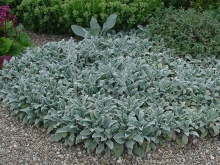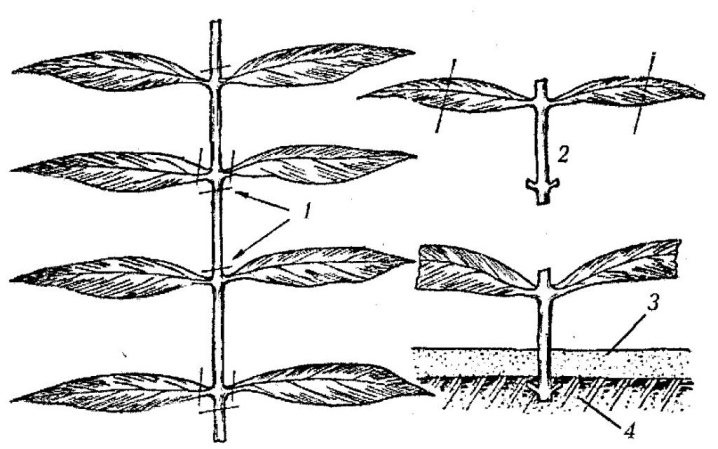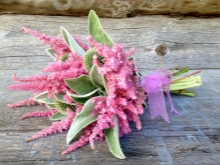Cleaner: varieties, planting and care

Chistets is a genus of herbaceous and semi-shrub ornamental plants. Today, they include about 300 varieties. Quite often, household plots are decorated with chastets. In our article, we will consider the features of plants, their varieties, as well as the subtleties of planting and further care.



Peculiarities
Chisetz (the second name is stachis) is a fairly popular plant that is grown for various purposes. Its main purpose is to be used as a decor, decoration of a backyard territory. This plant is often called "sheep's ears" because the ground part is quite thick and fluffy.
It is worth considering in more detail the description of this unusual culture. The purse is a perennial plant. It has rather large leaves of an oblong shape, while they taper downward. The plant usually reaches one meter in length. Flowers can be of different colors - white, yellow, purple, pinkish or with a lilac tint. Their shade depends on the variety. Flowers gather in false whorls, forming inflorescences that resemble spikelets. The fruit of stachis is a triangular nutlet, which has an ovoid or oblong shape. Flowering usually lasts from early summer to autumn.



It should be noted that not all varieties are in demand, because they include a weed - annual stachis. It is a dicotyledonous plant that fills large areas rather quickly.
This weed is often found in forest-steppe areas, it harms the crops of grain crops. It usually grows on loose soil with moderate moisture.

Types and varieties
As it was said, the chastetz is represented in more than 300 varieties. Consider the most famous and popular types, which are mainly used as a decorative element.
Woolly
The peculiarity of this species is that the leaves are characterized by a thick pile of sufficient length. It is usually called "bunny ears". Shoots in length vary from 20 to 40 centimeters. This plant pleases the eyes of those around with flowers of a lilac-pink hue, perfectly withstands large frosts and does not need careful care. On average, the flowering period lasts from 40 to 50 days.

This variety includes the following varieties:
- Silver Carpet - the height of the plant is up to 15 cm, due to its compactness, it forms a silvery carpet;
- Big ears - compact shoots, leaves with good hairiness reach a length of no more than 25 centimeters;
- Striped phantom - leaves have white longitudinal stripes;
- Sheila macqueen - a distinctive feature is that there are no flowers, while the shoots are low, and the leaves are pubescent;
- Cotton ball - the flowers are externally similar to cotton bolls.



Forest
Usually, the forest chase grows in forests, and it is found not only in Europe, but also in Western Asia. This is the most common type of plant. Erect stems have shaggy leaves of a dark green color and inflorescences of a bright crimson hue.
This type is used as a sedative and hemostatic drug.


Byzantine
A herbaceous species that has straight stems, their length reaches 60 centimeters. This variety is common in South Asia.
It is popular due to the fact that it contains a huge amount of essential oils and vitamin C.

Annual
This variety is also presented as a herb. White or pale yellow inflorescences with red spots are distinguished by a strong aroma, and the leaves are characterized by splendor. This species is considered an excellent honey plant, but it is not used for medical purposes. The grass reaches a height of 20 to 50 cm. The plant blooms all summer and early autumn.


Baikal
It is a very attractive species, which is up to 50 cm high. It has lanceolate foliage with a whitish pile. The flowers are quite large, they differ in purple-red or purple inflorescences.
Plants of this variety are often used to treat high blood pressure and can also be used as a powerful drug to calm the nervous system.


Swamp
This species is quite tall as the stem reaches over one meter. The leaves contain small denticles on the sides. The stalk is covered with hard villi directed downward. The plant blooms all summer, while delighting the eyes of those around it with lilac-purple flowers.
Stachys palustris is often used to stop blood and quickly heal wounds. This species also has such names as thornbill, grate, black-grass and tenacious.


Large-flowered
Such a purse is found on the territory of Asia Minor and the Caucasus. Perennial reaches a length of 20-30 cm. Leaves can be round, heart-shaped or long-petiolate. The flowers are quite large and gather in capitate inflorescences. This variety is represented by the following decorative forms:
- "Alba" - the flowers are snow-white;
- "Superba" - the color of the flowers can be from pink to purple.


Field
The field purse is an annual spring weed. The creeping plant has pubescent leaves. The stem reaches no more than 30 cm in length. Leaves can be of various shapes from round to heart-ovate, but with a purple bloom. Pale pink flowers can be seen from summer to autumn.
This species can be easily dealt with if measures are taken in time to destroy it.

German
It is a perennial plant that is quite tall, because the 4-sided thick stem reaches a length of 60 to 120 cm. The oval leaves have a heart-shaped base. German chastetz is covered with white felt. The red flowers add sophistication to this look. The flowering of the plant can be observed from June to September.
The species is found on stone slopes and forest edges of the Crimea. This plant has medicinal properties.


Vegetable
This species is also called the Chinese artichoke, because China and Japan are its homeland. Vegetable peel is a perennial species, presented as a strong bush up to 70 cm high. The entire bush is covered with tough villi. In appearance, a vegetable nettles can be easily confused with deaf nettles. Flowering is represented by small purple or pink flowers.
You should not propagate it by seeds, it is better to use nodules growing on stolons. It is they who have nutritional value, which is why the plant was named vegetable.

Monier "Hummelo"
This variety belongs to perennial plants. A decorative leafy look is often acquired to decorate the local area. It has a long flowering period, attracting attention with purple-red flowers, while one is 2 cm in size. Several dozen flowers form an inflorescence that forms on a long stem.

How to plant?
Before planting the seedlings of the purist, the soil should be prepared. The optimal time is July. For 1 m² of land, the following components will be required:
- potassium sulfate - 20 grams;
- superphosphate - 50 grams.


You should carefully dig the area for planting and add the above components to a depth of about 30 cm.If weed roots are found in the open ground, you should get rid of them, and also add organic feeding - 10 kilograms.
Already in August, it is possible to plant seedlings on the prepared soil mixture. The distance between plants should be about 30-40 cm.
The soil should be drained, light and without excess water, since the plant does not like high humidity.


How to take care of it properly?
The purist is a rather unpretentious plant that does not need careful care, but it is worth paying attention to a few points for caring for him.
- Lighting. Chistets grows superbly in areas with good illumination. Although a little shade is allowed. They can be planted both under various shrubs and on open ground.
- Temperature. The purist grows well at an air temperature of +20 to +24 degrees Celsius. If it is outdoors, but the temperature may be slightly higher. The plant is not afraid of frost, usually withstands them under the snow. It does not lose foliage for the winter, but already in the spring it is not characterized by attractiveness. Many gardeners remove some of the foliage.
- Earth. Chisetz grows superbly on various soils. If there is a choice, then it is better to give preference to light soils, which are characterized by moderate fertility. On too fertile soils, the plant becomes bright green, losing its silvery color.
- Watering. The plant needs moderate watering. It does not suffer from temporary drought, but waterlogging is best avoided so that rot does not appear. You can proceed to the next watering only if the top layer of the earth is thoroughly dry.
- Top dressing. The plant should be fertilized so that it blooms profusely and grows quickly. With the help of top dressing, the cleanser can accumulate strength in order to survive the winter normally. In the spring, you need to fertilize the soil 2 times with humus from cow or chicken manure and ammonium nitrate. If desired, mineral complexes can be used instead of organic matter.
- Pruning. Be sure to remove the leaves that have dried up, and the peduncles after the plant stops blooming. Usually, this process negatively affects the appearance of the chisel, since its stems are stretched and exposed in places. There are cases when specialists prevent a plant from blooming. After the buds are formed, they are cut off. Thus, the low shoots retain attractive leaves.



Reproduction methods
"Sheep ears" can be propagated in several ways, each of which has its own characteristics. Let's take a closer look at each of them.
Cuttings
The lower part of the shoot acts as a cutting. It should have 2-4 leaves or individual leaves that come from the lower rosettes. They should be rooted in a special soil mixture of peat and sand. It is worth being very careful with watering the cuttings, because they start to rot quite easily. After about 2-3 weeks, roots will appear, and then shoots will begin to appear.

Dividing the bush
This breeding option can be used at any time of the year, but it is better to abstain in winter. It is not necessary to dig the entire bush. Some growers only use part of the root system to transplant to a new location. If you dig up the whole plant, then first you need to get rid of the soil, carefully divide the root system with your hands. The strips should be planted at a distance of 15-20 cm.


Seeds
Reproduction of "bunny ears" using seeds is the most popular method. The optimal month for planting is March, although this method can be used for autumn planting. In regions with harsh winters, the plant is grown for seedlings. The first shoots begin to appear after about 3 weeks. It is worth noting that young shoots differ from adult plants, they are especially noticeable in the appearance of the leaves. Young plants have lint-free leaves, so quite often gardeners believe that they made a mistake when choosing seeds for planting.
Already at the end of May, the seedlings become strong, which allows them to be planted in open ground. It is very important that the lump with soil remains intact when transplanting. In the open field under the sun, the plant begins to take on an attractive appearance, the leaves acquire hairiness and silver color. Closer to autumn, the plants form an exquisite carpet.


If you plant a seedling cleaner, it is worth preparing boxes filled with moist soil from peat and sand. The first shoots are already visible from 5 to 10 days. Plants do not need to be transplanted into another container. If there are many seedlings, then they are simply thinned out. If desired, the purse can be transplanted 2-3 times from spring to autumn.
Diseases and pests
The chisel is quite resistant to various pests and diseases, which is one of its strong points. If you take care of him correctly, then he does not get sick at all.

Use in landscape design
Quite often, pubescent plants are used when creating landscape design. They cover the entire soil, creating an amazing "canvas". Since the purse forms a silvery "carpet", it is ideal for creating contrasting compositions with other plants. For example, "bunny ears" look great in an ensemble with a yaskolka or a two-color cross. They form a wonderful tandem with a Carpathian bell or lavender. The combination of silvery stachis and orange marigolds looks very nice.


Woolly net is used for carpet planting or for the formation of borders in flower beds and flower beds. This plant looks good in rockeries, it can be used for alpine slides, since it creates a contrast with stone, and is also unpretentious to light and soil.
Stachis flower stalks are used to create bouquets. Velvety leaves with silvery hairs are used as the basis of a bouquet arrangement. They give it color and splendor.



See the next video for even more information on the purist.







































































































The comment was sent successfully.